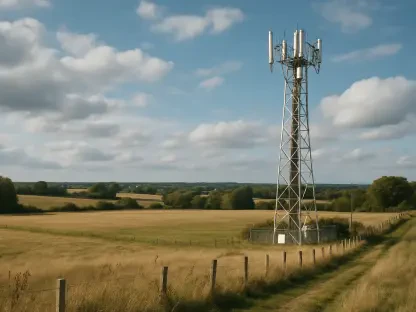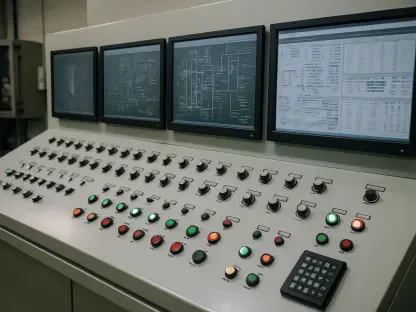As the offshore energy sector continues to navigate its complex and demanding environment, the reliance on advanced communication technologies has reached unprecedented heights. Off the shores where oil and gas exploration takes place, the requirement for robust satellite connectivity has become critical. It is a sector characterized by remote and often harsh conditions, where the need for reliable and consistent communication is paramount for safe and efficient operations. Industry players are increasingly investing in satellite technology to enhance connectivity for exploratory drilling, operational production, and the various service vessels essential for maintaining these endeavors. This investment is reflected in the market’s recent activities, where financial outlays have surged, echoing with fluctuating rig day rates that directly affect suppliers, particularly communication service providers.
Rising Investments in Communication Technologies
The Role of Financial Outlays
In the world of offshore drilling, the financial demands for securing effective communication are substantial. Previous years witnessed notable financial commitments, such as TotalEnergies’ recent move to lease Noble’s Viking drillship off Papua New Guinea. Such decisions highlight the immense monetary investments driving this sector, underscored by a market shift where rig day rates have escalated from $200,000 to nearly $600,000. This volatility is not isolated, influencing the broader ecosystem that includes essential suppliers like those in communications. While these figures reflect the pricing strategies applied across the industry, they also underscore a growing recognition of the need for sophisticated connectivity solutions to support diverse offshore activities, from safety operations to data transmission.
Communication Service Providers and Market Dynamics
The offshore market’s inclination toward satellite technology is reshaping the playing field for communication service providers. Almost every offshore asset deploys satellite connectivity, necessary to sustain operations under diverse geographical and environmental conditions. With the impending transition to renewable energy frameworks, including offshore wind and solar technologies, the demand for such connectivity solutions is predicted to surge. Companies within the sector are preparing to ramp up their satellite infrastructure to accommodate this shift. Valour Consultancy’s projections indicate an expenditure of nearly $650 million on satellite communication services by 2025, spotlighting the increased reliance on these technologies. This anticipated capital influx is set to bolster the competitiveness of service providers, fostering innovation and enhancing the quality of connectivity offered.
Growth Opportunities in the Emergent Landscape
Expanding Fleet and Connectivity Needs
The horizon within offshore energy operations reveals compelling growth opportunities, primarily fueled by an expanding fleet of specialized vessels. Currently, over 120 active drillships, numerous semi-submersibles, and other pivotal marine structures like jackups and FPSOs are in operation. As the fleet grows and diversifies, the need for satellite connectivity becomes more pressing. Specialized vessels, whether newly designed or adapted from existing merchant crafts, are distinctively positioned to benefit from enhanced connectivity. The vessels serve not only drilling operations but also critical support functions—representing a burgeoning market segment for satellite technology providers. They carry potential as conduits for a range of operational advancements, equipped to handle the sector’s shifting demands.
Future Outlook for Satellite Connectivity
With the offshore energy industry’s gradual transition towards renewables, a new chapter in satellite connectivity is unfolding. The industry’s pivot toward sustainable energy forms dovetails with increased demand for resilient and efficient communication solutions. The outlook suggests a stark rise in the adoption of satellite services, offering substantial market opportunities over the coming years. This transition portends a stronger dependence on satellite technologies to facilitate the safe and profitable operation of emerging energy systems. The robust growth trajectory anticipated in this sector not only reorients current practices but also shapes emerging paradigms where connectivity sits at the forefront of offshore energy innovation and sustainability.
Navigating Future Challenges in the Offshore Sector
Addressing Market Volatility
The offshore energy market remains influenced by external variables, including fluctuating commodity prices and regulatory changes. This volatility not only affects operational costs but also influences communication demands. The capacity of companies to adjust to these fluctuations hinges on their ability to maintain reliable connectivity. Satellite solutions provide the requisite flexibility and scalability, enabling operators to navigate these uncertainties. Communication providers, in response, are developing strategic plans to meet escalating demands while ensuring service continuity and quality.
Leveraging Connectivity for Strategic Advantage
As the offshore energy industry gradually shifts towards renewable sources, a transformative chapter in satellite connectivity is emerging. This pivot to sustainable energy aligns with a growing need for robust and efficient communication systems. Looking ahead, satellite services are expected to see a significant surge in adoption, presenting considerable market opportunities in the near future. This evolution signals a deeper reliance on satellite technologies to ensure the safe, efficient, and profitable operation of new energy infrastructures. The anticipated strong growth trajectory in this sector not only redefines existing methodologies but also influences emerging frameworks where connectivity plays a crucial role. This connectivity becomes a central component of innovation and sustainability in offshore energy. Companies in the industry must now adapt to leverage these cutting-edge satellite solutions, ensuring they are at the forefront of technological advancements. As renewable energy gains ground, the fusion of connectivity and sustainability will be key to driving success in the offshore energy landscape.









